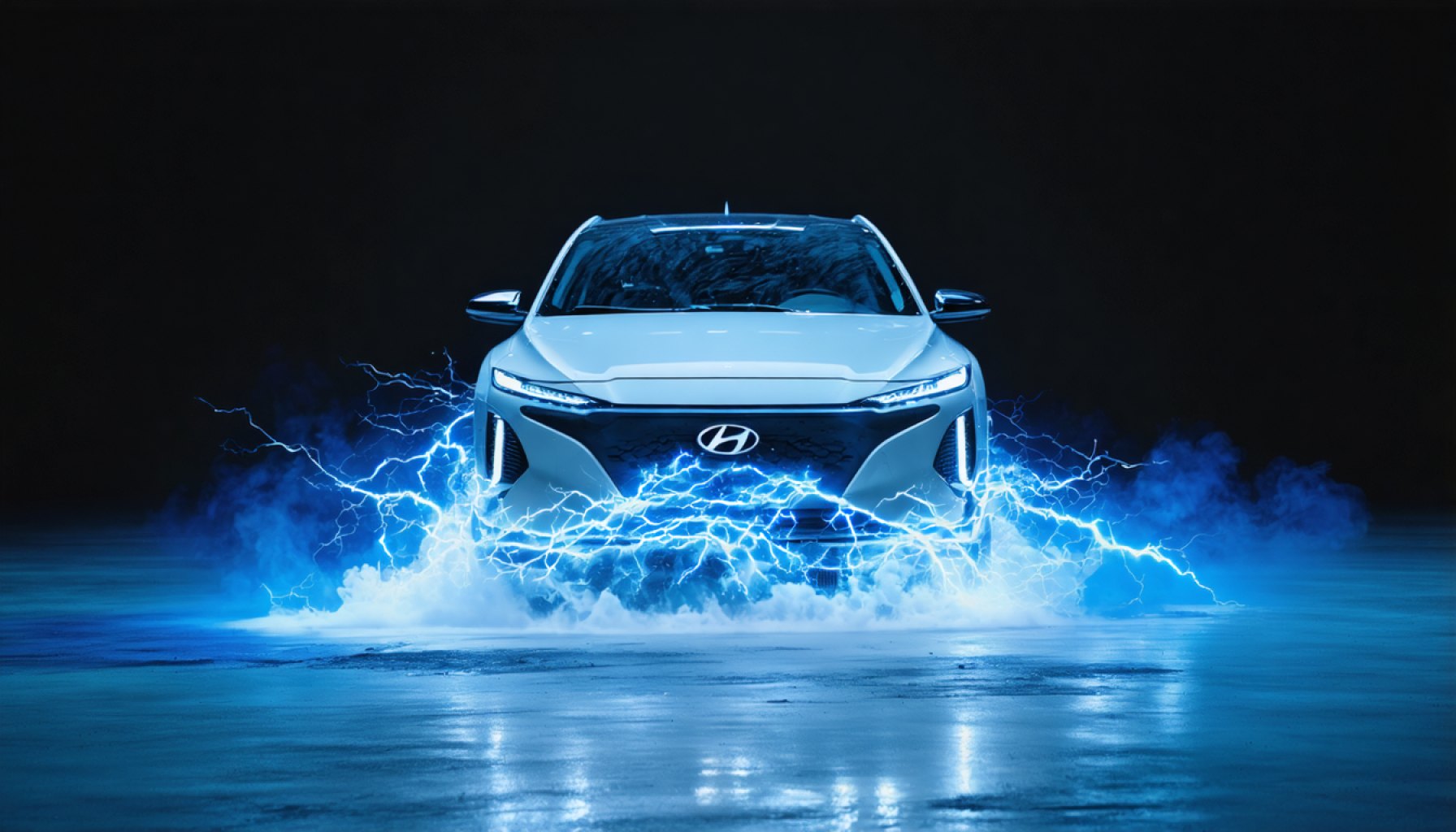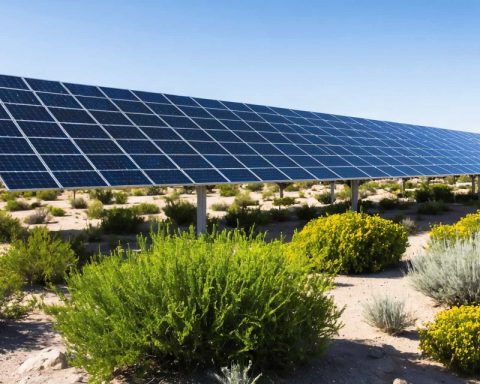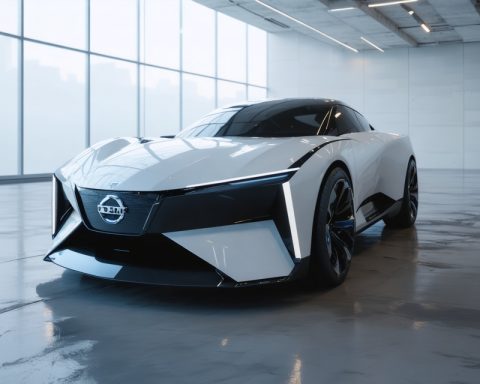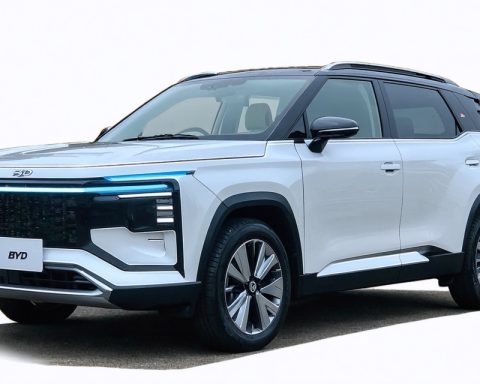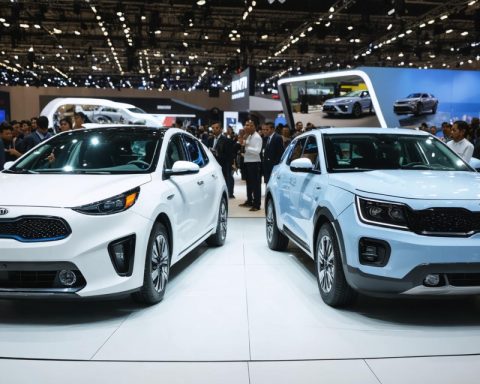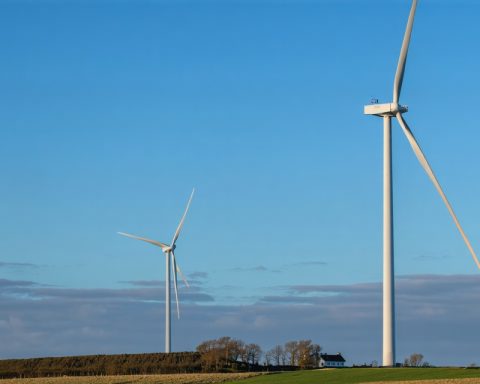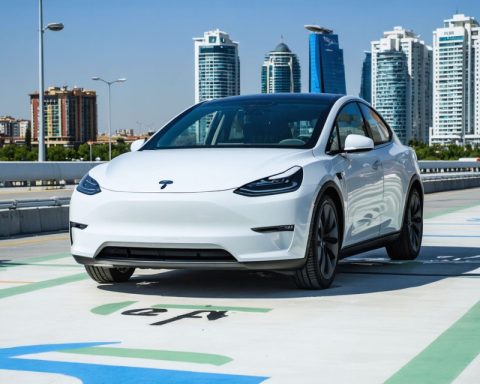- Hyundai is aggressively entering China’s EV market with a new electric SUV designed specifically for Chinese consumers.
- Despite global carmakers pulling back, Hyundai aims to compete with local giants like BYD in the world’s largest EV marketplace.
- The new SUV, potentially named the IONIQ 4, is built on Hyundai’s advanced E-GMP platform, combining agility with futuristic design.
- A dedicated R&D Center in China enables Hyundai to blend global expertise with local insights, enhancing collaboration with Chinese tech firms.
- The new vehicle features striking design elements, including aerodynamic efficiency and a streamlined light bar, underscoring innovation.
- Hyundai’s strategic approach aims to redefine the Chinese EV market by aligning technology and aesthetics with regional preferences.
- This move reinforces Hyundai’s commitment to global leadership in sustainable mobility, promising advancement in the automotive industry.
A bold vision leads Hyundai’s charge into the thick of China’s bustling electric vehicle (EV) market, defying trends where many global carmakers pull back. With the unveiling of a new electric SUV tailored specifically for Chinese consumers, Hyundai stakes a claim in the world’s largest EV arena—showcasing ambition and innovation with the potential IONIQ 4.
China’s streets teem with electric wonders, dominated by homegrown giants like BYD, with whom Hyundai is daring to compete. Last year, Hyundai established the Hyundai Motor China Advanced Tech and R&D Center. This forward-thinking space harmonizes global expertise with local insight, fostering a collaborative ecosystem with Chinese tech firms and suppliers to craft bespoke EV experiences.
Picture this: a sleek, new SUV crafted with precision to resonate with the modern preferences of Chinese consumers. Snippets of its vibrant presence emerge from covert glimpses captured by Beijing Hyundai. Unlike the larger sibling models such as the IONIQ 5, the new SUV sports a more compact demeanor, clearly built upon Hyundai’s innovative E-GMP (Electric Global Modular Platform)—a symbol of agility and futuristic allure.
At first glance, the vehicle presents a captivating silhouette, with a full-length light bar gracefully outlining the front end. Its closed grille—a signature of Hyundai’s electrics—conjures images of aerodynamic efficiency. Notably, the rear boasts a cutting-edge, streamlined light bar, hinting at its forward-thinking design ethos.
While whispers circulate, calling it internally “OE,” its lineage to the IONIQ lineage feels more pronounced than ever. Historical naming conventions suggest a role for the letter “E” in its final moniker—a possibility that reinforces its connection to Hyundai’s burgeoning IONIQ series.
In this unfolding narrative, Hyundai’s move is more than just a market capture; it represents a global commitment to lead in sustainable mobility. Car enthusiasts and eco-warriors alike should stay alert as Hyundai readies to soon reveal more, tapping into the relentless waves of curiosity and anticipation surrounding specifications and pricing.
Hyundai’s strategic move in China showcases its unwavering commitment to EV innovation on a global scale. By tailoring its technology and aesthetics to local desires while maintaining an edgy, modern appeal, Hyundai is not just entering the Chinese EV market—it’s attempting to redefine it. This calculated electrifying endeavor promises to amplify Hyundai’s status, bridging cultural preferences with cutting-edge automotive advancements.
Hyundai’s Leap Forward: Unveiling New Electric SUV in China’s Vast EV Market
Hyundai’s bold escalation into China’s electric vehicle (EV) market marks a significant milestone, as the company endeavors to stake its claim amid stiff competition from dominant local manufacturers like BYD. With the upcoming launch of a new electric SUV specifically designed to appeal to Chinese consumers, Hyundai’s strategy is as ambitious as it is innovative. Here’s what we know so far, enhanced with additional insights into Hyundai’s strategic approach and the broader EV industry landscape.
Key Features and Specifications
Hyundai has engineered its new SUV based on the Electric Global Modular Platform (E-GMP), known for its agility and seamless integration of cutting-edge technology. This platform supports rapid charging, extensive driving ranges, and enhanced interior space utilization. The SUV’s design language, characterized by sleek aerodynamics and modern aesthetics, includes:
– Full-Length Light Bar: Enhancing visibility and adding a futuristic touch.
– Closed Grille Design: Promoting aerodynamic efficiency.
– Streamlined Rear Light Bar: Emphasizing forward-thinking design elements.
Strategic R&D and Collaboration
To support this project, Hyundai established the Hyundai Motor China Advanced Tech and R&D Center last year. This hub aims to synchronize global expertise with local market insights. By collaborating with Chinese tech firms and suppliers, Hyundai can deliver tailored EV solutions that resonate with regional consumer preferences.
Real-World Use Cases and Ecosystem Integration
Hyundai’s new SUV is not just a vehicle; it’s an experience. Integrating with digital urban ecosystems, the SUV offers advanced connectivity options, supporting smart city initiatives prevalent in China. Key use cases include:
– Smart Navigation and Parking Solutions: Leveraging AI to enhance convenience for urban drivers.
– Eco-Friendly Features: Advanced regenerative braking and energy-efficient drive modes.
Market Forecasts and Industry Trends
The Chinese EV market is the largest globally, with sales expected to continue their upward trajectory. The Chinese government’s commitment to reducing environmental impact through subsidies for electric vehicles and building EV infrastructure presents significant opportunities.
According to a report from McKinsey, the Chinese passenger EV market is projected to grow at a compound annual growth rate (CAGR) of 25-30% between 2021 and 2030. Hyundai’s entry is timely, aligning with national incentives and consumer shifts toward sustainable mobility.
Challenges and Limitations
Despite the strategic foresight, Hyundai faces challenges:
– Strong Local Competition: Brands like BYD and NIO have a formidable presence.
– Consumer Loyalty: Convincing Chinese consumers to switch from established local brands can be difficult.
Insights and Predictions
Hyundai’s push into the Chinese market reflects broader trends towards globalization of EV technologies and sustainable practices. By focusing on local consumer needs and preferences while leveraging global expertise, Hyundai could redefine its brand identity within China. If successful, this model could be replicated in other burgeoning EV markets worldwide.
Actionable Recommendations
For consumers eagerly anticipating Hyundai’s new SUV, consider the following tips:
– Stay Updated on Launch Announcements: Hyundai’s new model may offer promotional incentives at launch.
– Evaluate Charging Infrastructure: Ensure compatibility with local charging networks.
– Explore Connected Features: Leverage integrated smart features to optimize driving efficiency.
Conclusion
Hyundai’s strategic foray into China’s EV market underscores its commitment to sustainable innovation and customer-centric design. The blending of global engineering prowess with local market strategies exemplifies Hyundai’s role in the future of sustainable transportation. Enthusiasts should watch for the latest updates, optimizing their anticipation for a vehicle that blends cutting-edge technology with regional appeal.
For further details about Hyundai’s global innovations, visit Hyundai’s official website.
